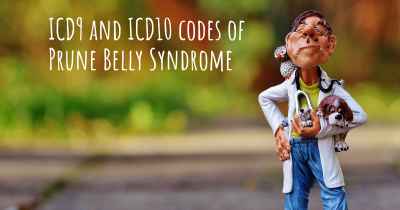What is the history of Prune Belly Syndrome?
When was Prune Belly Syndrome discovered? What is the story of this discovery? Was it coincidence or not?

Prune Belly Syndrome: A Historical Overview
Prune Belly Syndrome, also known as Eagle-Barrett Syndrome, is a rare congenital disorder characterized by a triad of symptoms: absence or severe underdevelopment of abdominal muscles, undescended testicles (cryptorchidism), and urinary tract abnormalities. This condition primarily affects males, with an estimated incidence of 1 in 30,000 to 1 in 40,000 live births.
The history of Prune Belly Syndrome dates back to the mid-19th century when it was first described by a Scottish surgeon named Sir Jonathan Hutchinson in 1848. He reported a case of a child with a wrinkled abdomen resembling a prune, hence the name "Prune Belly Syndrome." However, it wasn't until 1901 that the condition gained further recognition when Frederick Fröhlich, an Austrian pediatrician, provided a more comprehensive clinical description.
Throughout the 20th century, several medical professionals contributed to the understanding and classification of Prune Belly Syndrome. In 1923, Robert Eagle, an American urologist, described the association between the syndrome and urinary tract abnormalities, emphasizing the importance of early diagnosis and intervention. Later, in 1938, George Barrett, an American pediatrician, further expanded on the clinical features and proposed the term "Eagle-Barrett Syndrome."
Genetic and Developmental Insights
It wasn't until the latter half of the 20th century that researchers began to explore the genetic and developmental aspects of Prune Belly Syndrome. In the 1970s, advancements in ultrasound technology allowed for prenatal diagnosis, leading to a better understanding of the condition's embryological origins.
Studies conducted in the 1980s and 1990s revealed that Prune Belly Syndrome is associated with a variety of genetic abnormalities. The most common genetic anomaly observed is a deletion or mutation in the ACTA2 gene, which plays a crucial role in muscle development. Other genetic mutations, such as those affecting the RET and SLC2A2 genes, have also been identified in some cases.
Advancements in Diagnosis and Treatment
Over the years, advancements in medical imaging techniques and genetic testing have significantly improved the diagnosis and management of Prune Belly Syndrome. Prenatal ultrasound allows for early detection of characteristic features, enabling parents and healthcare providers to prepare for potential complications.
The treatment of Prune Belly Syndrome is multidisciplinary and aims to address the various associated complications. Surgical interventions are often required to correct urinary tract abnormalities, such as vesicostomy or ureteral reimplantation. In cases of undescended testicles, orchidopexy may be performed to bring the testicles into the scrotum.
Current Research and Future Outlook
Despite significant progress in understanding Prune Belly Syndrome, many aspects of the condition remain poorly understood. Ongoing research focuses on further elucidating the genetic and molecular mechanisms underlying the syndrome, as well as exploring potential prenatal interventions.
Additionally, advancements in regenerative medicine and tissue engineering hold promise for future treatment options. Researchers are investigating the potential of stem cell therapy and tissue regeneration to restore abdominal muscle function in individuals with Prune Belly Syndrome.
In conclusion, Prune Belly Syndrome has a rich historical background, with contributions from various medical professionals over the years. The understanding of this rare condition has evolved significantly, from its initial clinical description to the identification of genetic abnormalities and advancements in diagnostic techniques. While challenges remain, ongoing research offers hope for improved management and potential therapeutic interventions in the future.
Posted May 29, 2017 by Mouhamed Mounirou ANNE 2000








